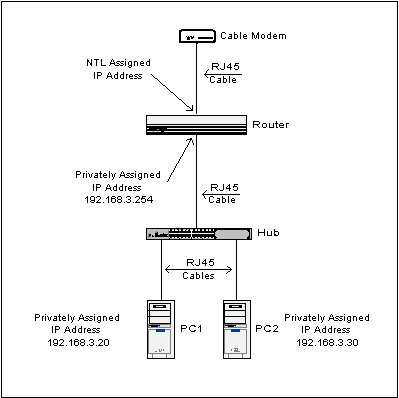CSS Forums
Tuesday, April 16, 2024
04:50 PM (GMT +5)
04:50 PM (GMT +5)
|
#1
|
|||
|
|||
|
RoutersRouters are devices which make it possible to "choose" the path that datagrams will take to arrive at the destination.
They are machines with several network interface cards each one of which is linked to a different network. So, in the simplest configuration, the router only has to "look at" what network a computer is located on to send datagrams to it from the originator. However, on the Internet the schema is much more complicated for the following reasons:
So, routers work using routing tables and protocols, according to the following model:
So, there are two scenarios, In the case of indirect delivery, the role of the router and in particular that of the routing table is very important. So, the operation of a router is determined by the way in which this routing table is created.
Routing Table The routing table is a table of connections between the target machine address and the node according to which the router must deliver the message. In reality it is enough that the message is delivered to the network that contains the machine, it is therefore not necessary to store the complete IP address of the machine: only the network identifier of the IP address (i.e. the network ID) needs to be stored. The routing table is therefore a table which contains address pairs. The router knowing the address of the recipient encapsulated in the message, will be able to find out what interface to send the message on (this comes back to knowing which network interface card to use), and to which router, directly accessible on the network to which this card is connected, to send the datagram. This mechanism consisting of only knowing the address of the next link leading to the destination is called next-hop routing. However, it may be that the recipient belongs to a non referenced network in the routing table. In this case, the router uses a default router (also called the default gateway). The message is therefore sent from router to router by successive hops, until the recipient belongs to a network directly connected to a router. This then sends the message directly to the target machine. In the case of static routing, it is the administrator who updates the routing table. In the case of dynamic routing a protocol called a routing protocol enables the automatic updating of the table so that it contains the optimal route at any time. Routing protocols The internet is a collection of connected networks. As a result, all routers do not work in the same way, this depends on the type of network upon which they are found.  In fact, there are different levels of routers which operate with different protocols:
|
|
#2
|
|||
|
|||

__________________
"You were born an original. Don't die a copy." John Mason |
 |
«
Previous Thread
|
Next Thread
»
| Thread Tools | Search this Thread |
|
|










